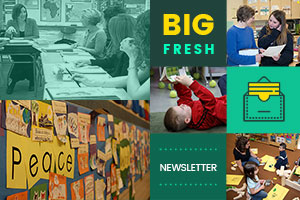In an eagle there is all the wisdom of the world.
Lame Deer
Last summer I was visiting my friend Sandy at her remote summer camp on an island in Maine. We were walking on a trail when we came upon a big pile of twigs, branches, and bits of animal fur. “That’s from the eagle’s nest,” Sandy explained. “It’s time for the eaglets to fly and they aren’t eager to leave. The adult eagles will throw out twigs and make the nest less comfortable to encourage the babies to fly away.”
I did some research after the visit, and sure enough, bald eagles have a lot of tricks to get their eaglets out of the nest when it’s time. The bases of the nests are often thorns or brambles, covered with softer material like bits of fur. The nests are huge, with alternating layers of branches, thorns, and cushioning fur or feathers.
When it comes time for the eaglets to leave, the adult eagles make the nest smaller and less comfortable to encourage the eaglets to fly. They remove the soft material and leave some bare thorns in its place. Once pricked, an eaglet is more likely to leave. After many weeks of tenderly caring for their offspring, even breaking up fish into small bits and feeding it piece by piece to their babies, the eagles will also withhold food. Adult eagles will perch on a branch 10-12 feet away from their eaglets with fish or prey in their beaks, coaxing the eaglets to come and get it.
I immediately thought of parents who have adult children who refuse to leave home. I wonder if they fantasize about throwing the kid’s bedroom furniture out onto the sidewalk? Dangling a bag of chips out a car window? But beyond literal parallels, the process of balancing comfort and discomfort for growth is something teachers grapple with all the time.
What makes this year so hard for “unfeathering” the nest is that all our usual routines and rituals are gone. What any of us wouldn’t give to be doing our normal complaining about how overstuffed our May schedules are with graduations, field trips, and celebrations. This is the time of year in classrooms when teachers normally would be starting branch by branch to make the comfortable nest a little smaller, a little cleaner, a little less comfortable. We need creative strategies this year to help students see that clear flight path to what’s next, when even adults aren’t sure what that path will look like.
One method that can work well with remote learning is the end-of-the-year interview. These interviews help each student see how they have changed and grown as a reader and writer. The one-on-one interview also gives each child the personal attention from their teacher and closure they crave.
Another powerful tool for closing out the year remotely is the read aloud. This week we share read alouds you can present over Zoom or through Google Classroom to remind everyone of the good times you shared together over the year, as well as the promise of good times in new classrooms next year.
This newsletter is our end of the school year gift to you, with all free links. Enjoy!
Brenda Power
Founder, Choice Literacy

Melanie Meehan presents a series of thoughtful questions to help students reflect on their process as writers, and what they need as they move into the summer and new classrooms.
Kindergartners may be too young for reading interviews early in the fall, but Mandy Robek finds spring reading interviews are an excellent bridge to families and summer reading suggestions.
Ruth Shagoury shares why year-end interviews are so valuable, and includes questions to use in your interviews.
Bitsy Parks explains how the ending weeks of read alouds in her first-grade classroom are designed to celebrate learning and shared experiences from the entire year.
Jan Burkins and Kim Yaris explore how ending the year is all about making space for memories, and provide some texts to help in the process.
Our new online course from Ruth Ayres, Better Student Feedback, will help teachers and coaches think through how to talk with students about progress and goals, as well as what to do with their responses. The course fee of $39 includes two months of access to the entire Choice Literacy library of 4000 articles and videos. If you have a current paid subscription to Choice Literacy, there is no charge for the course. Click here for details.
Quote It:
There’s a trick to the “graceful exit.” It begins with the vision to recognize when a job, a life stage, or a relationship is over — and let it go. It means leaving what’s over without denying its validity or its past importance to our lives. It involves a sense of future, a belief that every exit line is an entry, that we are moving up, rather than out.
Ellen Goodman
That’s all for this week!



